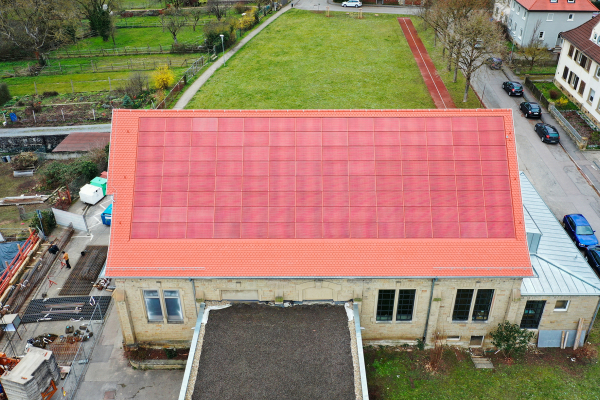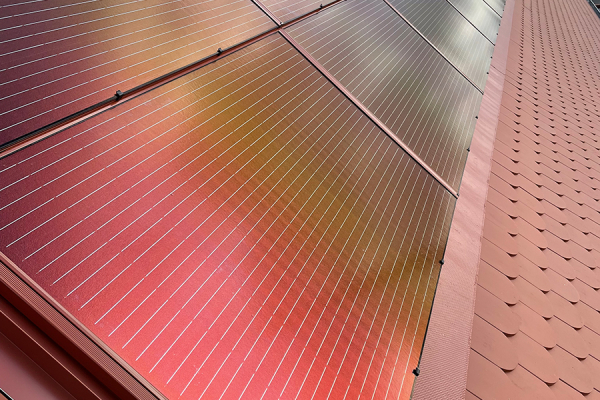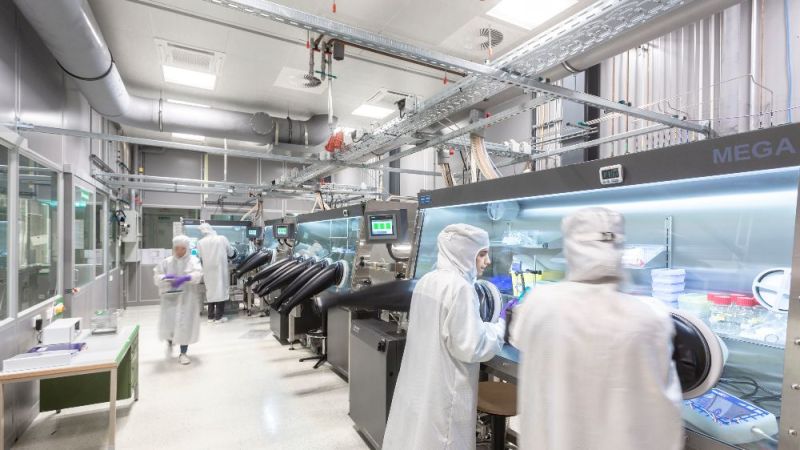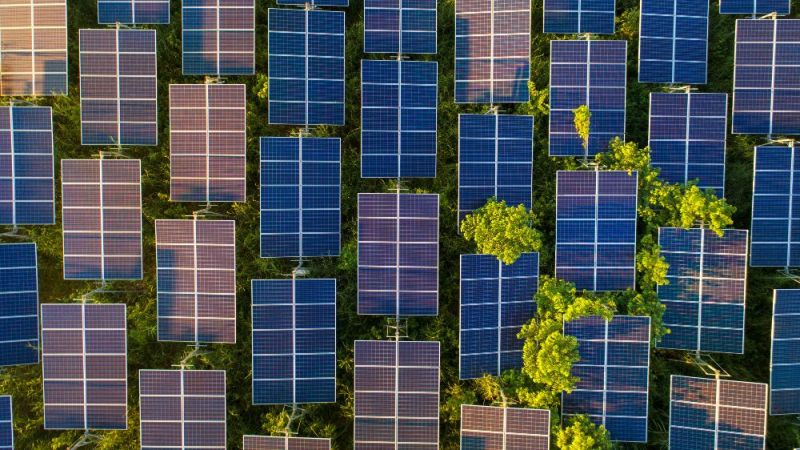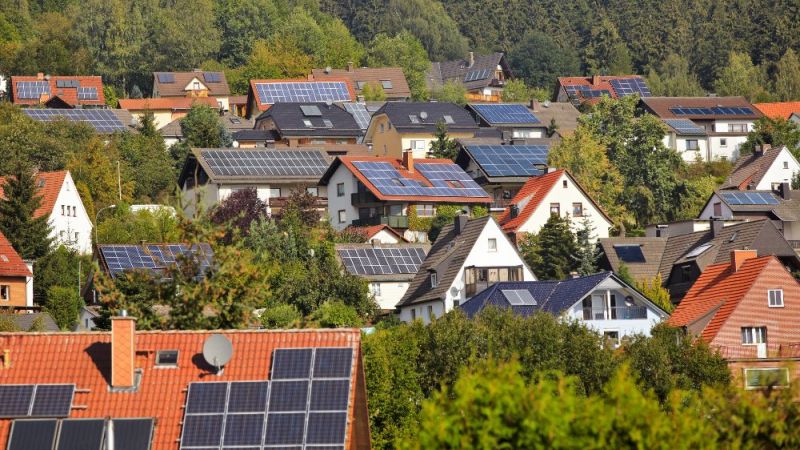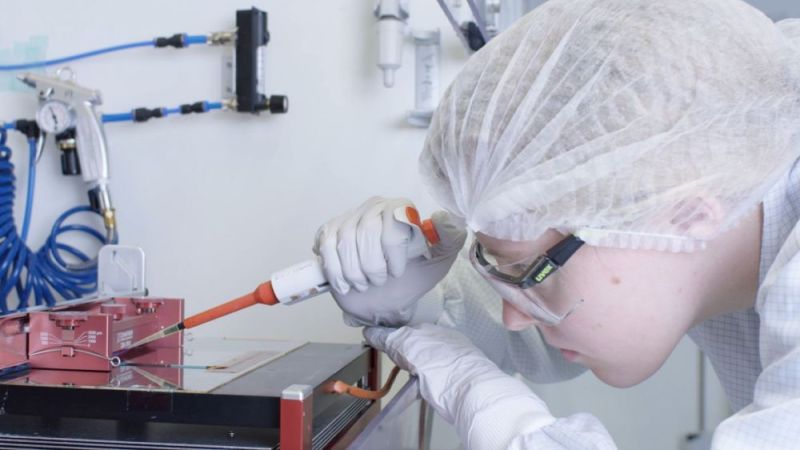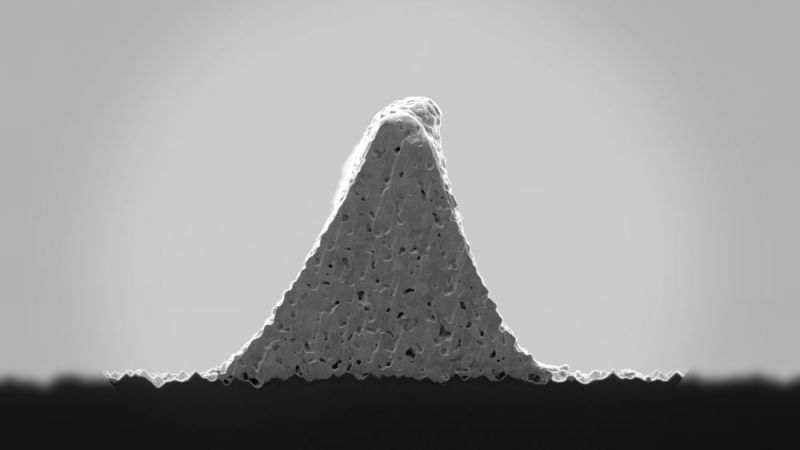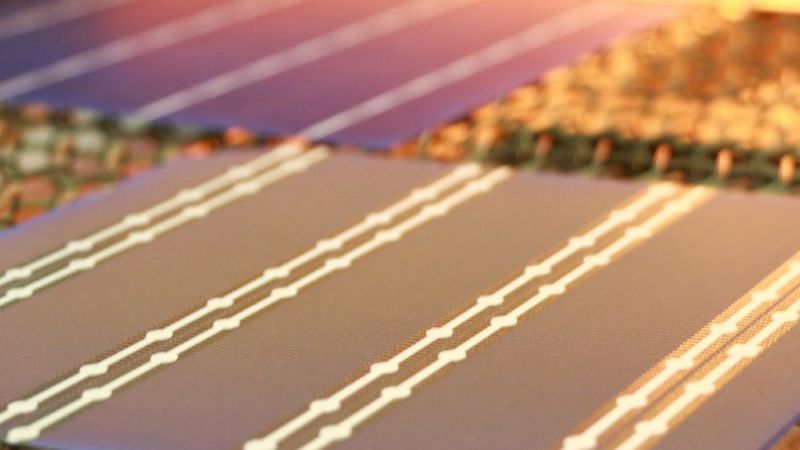Photovoltaik
Photovoltaic modules turn red
In the PVHide research project, a team of scientists has developed a brick-red photovoltaic system, and together with industrial partners, the team installed it - in a matching colour - on the roof of a historic building in Eppingen. The pilot installation demonstrates how building-integrated photovoltaics work in the interaction of design and technology.
The majority of existing photovoltaic modules, which are installed on roofs, buildings or free-standing facilities, for example, have a rather conspicuous appearance. Their typical blue-dark colour is related to the type of the solar cell which is because the most commonly used type of solar cells is made of crystalline silicon. In addition to the typical characteristic of the shimmering surface, silicon solar cells also have a bluish tint due to the material and production process.
To enable photovoltaic modules to be integrated more inconspicuously on roofs and on façades - which is important for buildings under monument protection, for example - researchers in the field of building-integrated photovoltaics (BIPV) are working on coloured solar modules, among other things. Their goal is to develop photovoltaic modules in colours adapted to the architectural environment in order to be able to integrate them more inconspicuously into building envelopes and structures so that they blend into an urban or landscape setting in an aesthetically pleasing way.
Red solar roof for gymnasium in Eppingen
A team of scientists from the Fraunhofer Institute for Solar Energy Systems ISE demonstrats how this works in practice in the PVHide project. In cooperation with two industrial partners and the town of Eppingen, the research project has produced a red solar roof whose photovoltaic modules are integrated into the roof of a gymnasium. Now, it unobtrusively produces solar electricity on the historic building.
The pilot installation consists of 224 photovoltaic modules with a special coating. This affects the performance of the photovoltaic system, but it still produces 90 percent of the electricity – compared to a typical photovoltaic roof system with uncoated glass. The researchers have further developed their patented MorphoColor structure within the project in order to make the cover glass of photovoltaic modules coloured. The project partners INTERPANE and AxSun have implemented the coating of the cover glass on industrial equipment and then transferred it to the production of coloured photovoltaic modules. As a practical example, the discreetly colored photovoltaic system installed in the tiled roof of the gymnasium in Eppingen has been created.
"The completion of the pilot installation is an important step forward for the large-scale implementation of MorphoColor. Since the production of the coloured glass panels, we have been able to improve our understanding of the optics and the angular stability of the colours even further," says Dr Thomas Kroyer, project manager at Fraunhofer ISE.
The Federal Ministry for Economic Affairs and Climate Action (BMWK) has funded the PVHide project as part of the 7th Energy Research Programme. (av)


